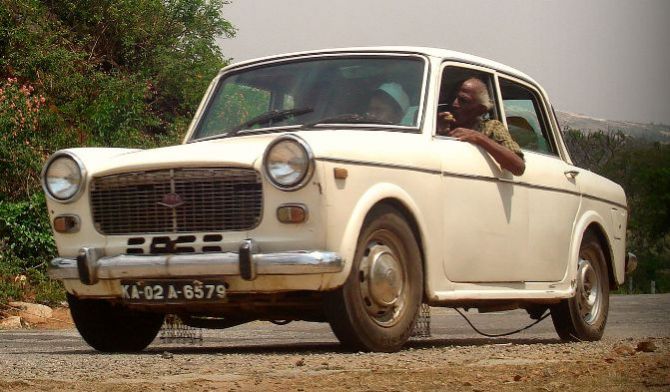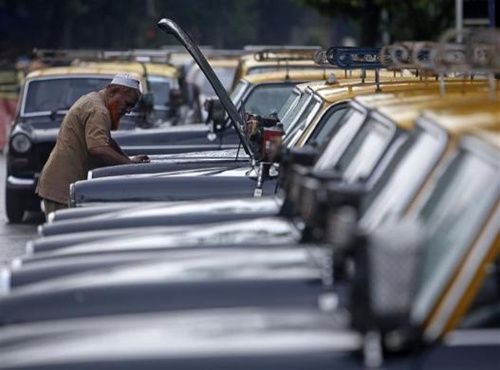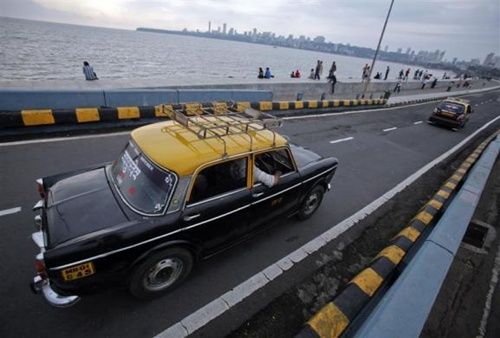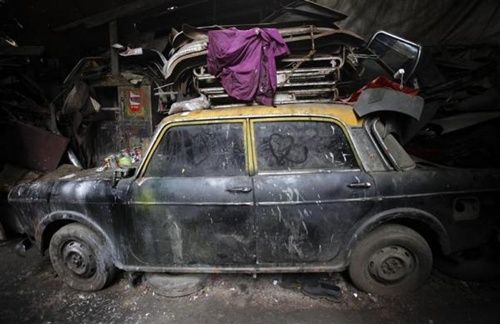Despite government controls, Walchand Hirachand Group cracked the market

Long before the iPad got invented in Cupertino, California, India had its own ‘Pad’ to enjoy.
And, laying hands on one of these in the seventies and eighties was even more challenging than queuing, overnight, outside an Apple store for a new iPad version. Indians who wanted a Pad had to wait not for days or weeks, but years.
The wait culminated with a call from the dealer, asking the lucky owner to pick it up. More often than not, besides the buyer’s immediate family, friends and well-wishers, too, gathered to celebrate the Pad’s home-coming.
Pad was a moniker for the Premier Padmini, which became the jewel in the crown of the Mumbai-based Walchand Hirachand Group.
Formed in 1944, Premier started production right after India’s independence and churned out Plymouth cars and Dodge trucks, built under licence from the Chrysler Corporation of the US.

But under then Prime Minister Jawaharlal Nehru, India functioned as a socialist state and cars were considered a luxury, and of low priority.
“This is ironic as the automobile industry transformed the economies of the US, South Korea and even war-ravaged Germany and Japan, turning them into industrial powerhouses,” says an industry veteran, who worked closely with the company.
Premier could only move forward by bringing in a small car that would not have the trappings of luxury.
In 1952, it entered into a licence agreement with Italy’s Fiat to bring the Fiat 1100.
In the sixties and seventies, the Government of India imposed price and volume controls and banned upgrade or model change by the passenger vehicle industry.
The price control was completely lifted only in 1985.

By 1972-73, the agreement with Fiat was vacated, on the government’s insistence for local production.
After a year of being rolled out as the Premier President, from a plant in Mumbai’s Kurla, the car was renamed, finally, as the Premier Padmini in 1974.
It is said that the government objected to the name ‘President’.
Padmini’s reference to the legendary queen of Chittor and her beauty was even captured in an ad later on.
The car had a price-tag of Rs 30,000, with a 1.1-litre petrol engine, producing 40-bhp peak power.

Unlike the chubby Ambassador from Hindustan Motors, the Padmini, with its modern, sleek lines and uncluttered look, appealed to women, celebrities and young buyers in the 1970s-80s.
While the ‘built-like-a-tank’ Amby became a favourite with government officials and politicians, the Padmini drove into the hearts of the upper middle-class.
Both had foreign antecedents -- the Ambassador evolved from the Morris Oxford III and the Padmini from the Fiat 1100.
The Tamil superstar Rajinikanth, yesteryear’s evergreen actor Dev Anand and actor-producer Aamir Khan have all been owners of the Padmini.
The car has also weaved its way into Bollywood, immortalised in songs such as ‘Seene me jalan. . .’ sung by Suresh Wadkar in the movie Gaman and in movies, the most recent being the John Abraham-Nana Patekar-starrer Taxi No. 9211.

The Padmini entered the Mumbai taxi market in the late-60s, when Premier approached the state government to encourage products by Maharashtra-based companies.
Earlier, Mumbai’s taxis used to be Ambassadors.
Easy and cheap to maintain, with legroom for travellers and a boot for luggage, the Padmini was considered safe and practical, and did well as a taxi after its introduction.
Contrary to popular perception, the taxi business was a small fraction of the total monthly sales of the Padmini.
Out of 3,400 cars sold every month, only 300 were sold as taxis.
The taxi business was more of a CSR activity for Premier, as the cars were subsidised. Premier made no money from its taxi business, notes a historian.

By the late-70s, Padmini’s market share reached 99 per cent with more than 38,000 vehicles plying in Mumbai.
Padminis were also used as taxis in other markets, but none of these were the size of Mumbai’s taxi fleet.
The highest volume achieved by the Padmini was of 37,000 units in 1987.
This was inspite of the onslaught from the Maruti 800, which was a brand-new car with nearly 15-20 per cent price subsidy from the government.
By then, the Padmini had versions with ACs and tinted glass windows as well.
But with the nineties downing the entry barriers to multinationals and with stricter pollution-control norms, Premier found Padmini’s engine to be unfit to face competition. By 2000, it stopped producing the car, with the Kurla plant suffering a lock-out after a workers’ strike the following year.
It turned to focus on commercial vehicles.
The Padmini taxis are also on their way out, being scrapped after the government decreed that above-20-year-old cabs won’t be allowed to run.
The remaining kali-peeli (black-yellow) Padmini cabs on Mumbai’s streets are now being eagerly replaced by Hyundai Santro, Maruti 800, Maruti Suzuki Wagon R and Tata Indica.











